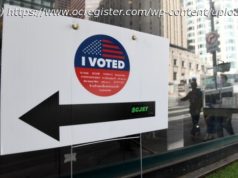It’s an issue of race, power and politics.
On Monday, the Supreme Court passed up an opportunity to reconsider whether the Constitution bars extreme partisan gerrymandering, returning a case from North Carolina to a trial court. The move followed two decisions last week that sidestepped issues in partisan gerrymandering cases from Maryland and Wisconsin, leaving unresolved questions of whether designing voting districts according to political interests is unconstitutional. Here are three books that explore the history and implications of redistricting.
RAT____ED The True Story Behind the Secret Plan to Steal America’s Democracy By David Daley 257 pp. Liveright Publishing. (2016)
According to Daley, former editor in chief of the website Salon, the 2008 election of Barack Obama presented Republicans with a crisis, and in an effort to take back the government, they used so-called dark money and sophisticated mapping technology to redraw the American political map such that their dominance in government would be set until at least 2020, when states will be able to redraw their maps. Daley uses Pennsylvania, North Carolina, Michigan, Ohio, Florida and Wisconsin as examples of states where “the drawing of district lines has been rigged to such a perverted degree that the resulting congressional delegation bears little resemblance to the actual votes cast,” as explained by our reviewer.
GIVE US THE BALLOT The Modern Struggle for Voting Rights in America By Ari Berman 384 pp. Farrar, Straus and Giroux. (2015)
This work of narrative history explores the twofold effect of the Voting Rights Act of 1965: On one hand, it succeeded in increasing voter registration in the black community, but it also “spawned an equally committed group of counterrevolutionaries” — including, according to Berman, Supreme Court Justices — who he argues have “waged a decades-long campaign to restrict voting rights.” Among the tools used for this end is gerrymandering, which has “siphon[ed] black voters away from adjoining white Democratic districts, making those districts whiter and more conservative.” Our reviewer called this book “engrossing” and writes, “Berman vividly shows that the power to define the scope of voting rights in America has shifted from Congress to the courts.”
DEMOCRACY IN CHAINS The Deep History of the Radical Right’s Stealth Plan for America By Nancy MacLean 334 pp. Viking. (2017)
Behind this political agenda is a group of wealthy donors, principally the Koch brothers, who funnel money into politics to further their positions, which tend to lean libertarian. The architect of this political model, according to historian MacLean, is James McGill Buchanan, a Nobel Prize-winning political economist who worked to advance public choice economics, which argues that politicians are motivated by self-interest rather than public good, and believed, therefore, in smaller government and fewer regulations, as well as the privatization of public services like education. Buchanan was concerned that politicians, preoccupied with re-election, were promising an overinvestment in public services, which he considered an economic problem. Drawing from previously unexplored archives of Buchanan’s personal papers, MacLean argues that he had a “stealth” agenda to curb the power of the majority and, in his words, “create, support and activate an effective counterintelligentsia.”






